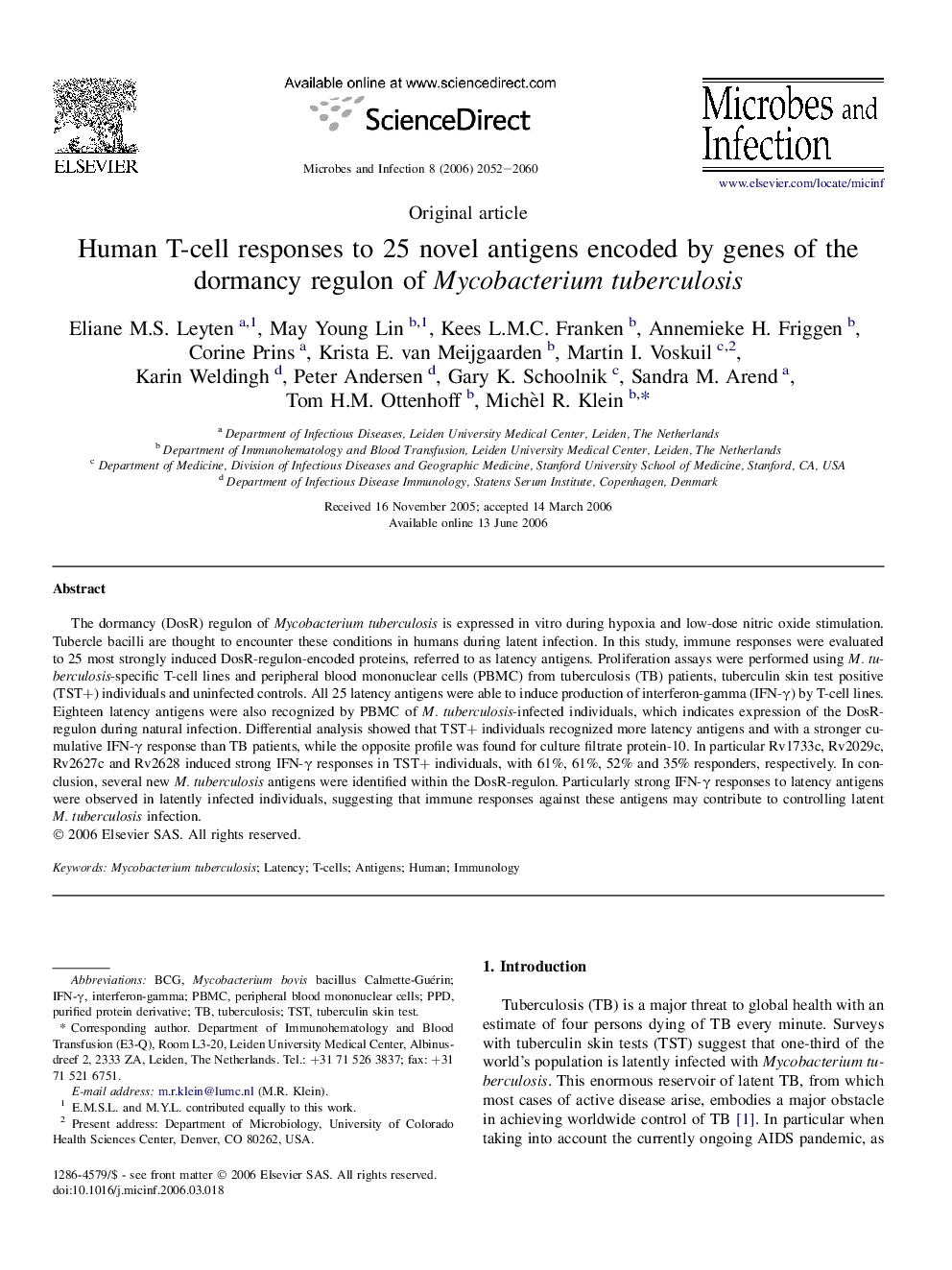| Article ID | Journal | Published Year | Pages | File Type |
|---|---|---|---|---|
| 3415909 | Microbes and Infection | 2006 | 9 Pages |
The dormancy (DosR) regulon of Mycobacterium tuberculosis is expressed in vitro during hypoxia and low-dose nitric oxide stimulation. Tubercle bacilli are thought to encounter these conditions in humans during latent infection. In this study, immune responses were evaluated to 25 most strongly induced DosR-regulon-encoded proteins, referred to as latency antigens. Proliferation assays were performed using M. tuberculosis-specific T-cell lines and peripheral blood mononuclear cells (PBMC) from tuberculosis (TB) patients, tuberculin skin test positive (TST+) individuals and uninfected controls. All 25 latency antigens were able to induce production of interferon-gamma (IFN-γ) by T-cell lines. Eighteen latency antigens were also recognized by PBMC of M. tuberculosis-infected individuals, which indicates expression of the DosR-regulon during natural infection. Differential analysis showed that TST+ individuals recognized more latency antigens and with a stronger cumulative IFN-γ response than TB patients, while the opposite profile was found for culture filtrate protein-10. In particular Rv1733c, Rv2029c, Rv2627c and Rv2628 induced strong IFN-γ responses in TST+ individuals, with 61%, 61%, 52% and 35% responders, respectively. In conclusion, several new M. tuberculosis antigens were identified within the DosR-regulon. Particularly strong IFN-γ responses to latency antigens were observed in latently infected individuals, suggesting that immune responses against these antigens may contribute to controlling latent M. tuberculosis infection.
